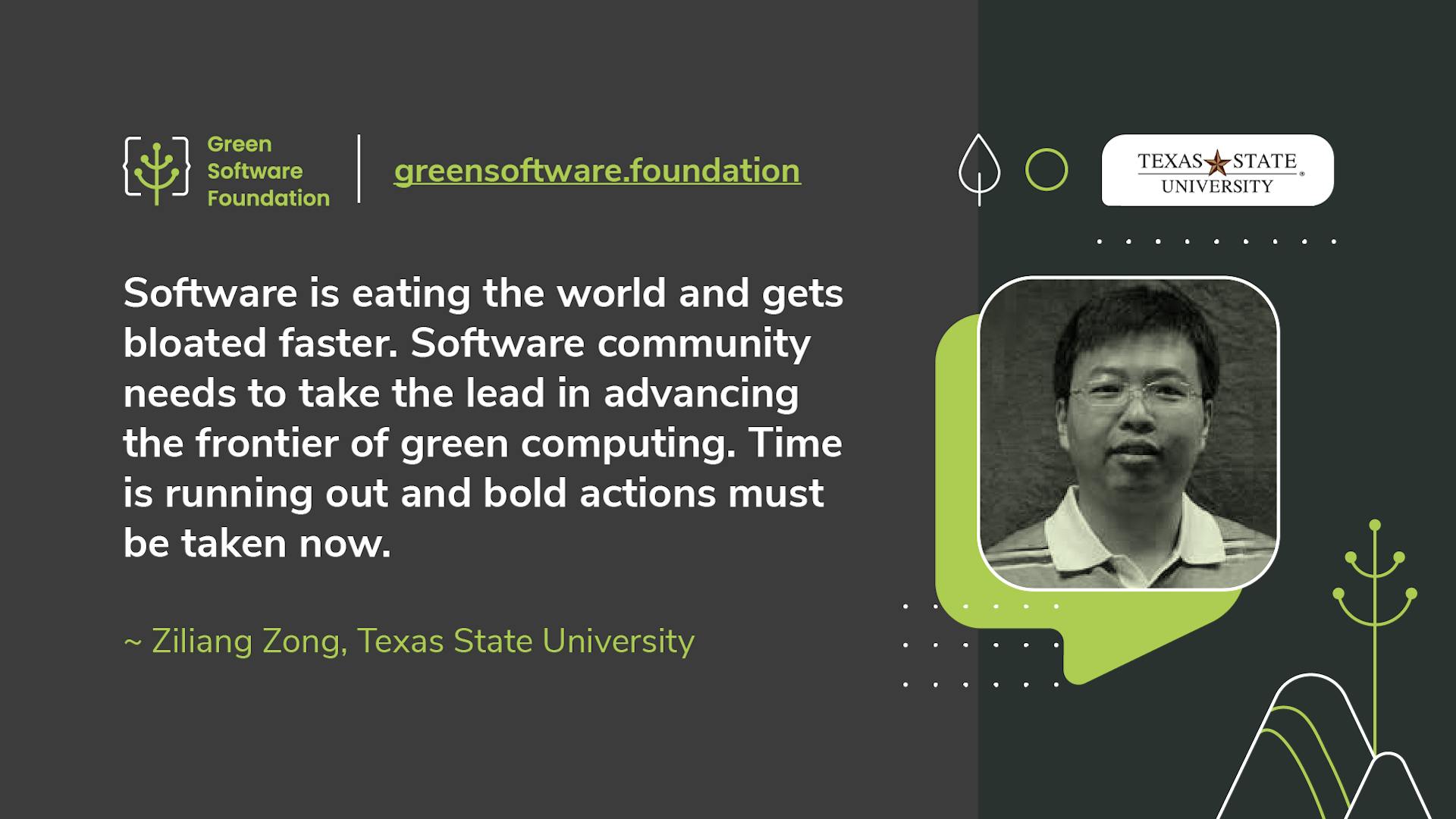Tell us about your work at the Energy Efficient Computing and Systems Laboratory at Texas State University and your work on green software education.
Texas State University (TXST) is fully committed to and has a long history to promote the research and education in sustainability in general and sustainable computing in particular. As the director of the Energy Efficient Computing and Systems Laboratory at TXST, I have been fortunate to work with a great team of colleagues from both industry and academia, and many talented students on addressing challenging problems in green software engineering, green AI, green data center, and green cloud with nearly 70 publications in these fields.
We developed the Marcher system, which has successfully supported a group of researchers to publish over 20 papers.
As for education, I noticed many years ago that very few universities introduce "green computing" topics in the core CS curriculum. This worries me because hundreds of thousands of CS students are graduated every year worldwide without the "green thinking" mindset and proper training. They will be the next generation of software engineers who write millions of lines of code throughout their careers.
To address this problem, I created and taught three green computing courses (at the undergraduate, master and PhD level respectively) at the CS Department of TXST. Approximately 200 students have learned this topic from the courses I taught in the past 8 years. [Check out this 2021 paper on Bringing Green Software to Computer Science Curriculum: Perspectives from Researchers and Educators for illumination on how green topics are covered (and not) in CS curricula.]
In addition, we developed the GreenCode platform to support other educators who want to teach green software design, which has been used by professors from the U.S., Asia, and Europe in various computer science courses and received over 31,000 code submissions to date.
Tell us about your career path, your interest in green software and your journey to GSF.
I received my PhD degree from Auburn University, where I studied energy efficient resource management for high performance computing systems. About 15 to 20 years ago, energy efficiency was primarily discussed in the community of national labs and large data centers. Since 2007, we have witnessed the booming of mobile computing led by the revolutionary innovation of the iPhone. Due to limited battery life, energy efficiency gradually becomes a factor that software developers need to consider.
I started to expand my research on improving the energy efficiency of general software after I joined Texas State University in 2011. Recently, with the large deployment of AI, Blockchain, VR/AR, and Cloud applications, environmental impact has grown to be a first-class concern that requires the full attention and close collaboration of all stakeholders in the software community. To share our previous research/education experiences with a broader audience and contribute more to the community, I joined the Green Software Foundation (GSF) and the work I have done with GSF colleagues in the past months has been exciting.
What do you, as an individual, expect to achieve by working with the GSF and in green software in general?
I want to work with the GSF community and contribute on developing power measurement tools that support green software design and education, making metrics for green software evaluation, finding solutions for challenging research problems in the field, and forming a software ecosystem that cares about greenhouse emissions and encourages creative thinking.
What obstacles do you see to popularising green software? How do you think we can overcome them?
The development of green software will encounter different obstacles at different stages. At the current early stage, the major obstacles are the lack of metrics, tooling, and awareness. To overcome this, we need to have a widely acceptable metric in place to evaluate the carbon impact of different software and develop urgently needed measurement and monitoring tools for software developers to practice green software design. We must also increase the awareness of green software through higher education, enterprise training, and social outreach.
Any other thoughts on green software and sustainability?
Software is eating the world and gets bloated faster. As hardware improvement quickly slows down in the post Moore era, it becomes the responsibility and inevitable mission of the software community to take the lead in advancing the frontier of green computing. Time is running out and bold actions must be taken now. I believe we will have a promising future if all stakeholders from industry and academia can work closely and make a long-term effort together.
This article is licenced under Creative Commons (CC BY 4.0)

